Boards Guide
Maker's Guide to 2026 Boards: Exploring the Future of Microcontrollers & SBCs
Get ready for an inspiring year with “The Guide to Boards 2026”! This edition celebrates innovation and versatility, spotlighting boards designed for next-generation projects in AI, IoT, and creative applications. From the powerful Raspberry Pi 500+ and Arduino Uno Q —bringing hybrid computing and edge AI to your fingertips—to compact solutions like the Seeed Studio XIAO family for space-constrained IoT designs, this guide is packed with options for every maker. Explore boards that push boundaries in robotics, smart environments, and LED artistry, including advanced controllers like Pixelblaze V3 and Adafruit Sparkle Motion. Whether you’re building intelligent systems, immersive lighting, or interactive props, the 2026 lineup offers the tools to turn bold ideas into reality.
The Raspberry Pi 500+ and the Arduino Uno Q take center stage this year. The Raspberry Pi 500+ combines the likes of the PI 5 into a stand alone all in one keyboard complete with backlit mechanical keys as well as an integrated M.2 SSD. The Arduino Q blends Linux-based processing with real-time microcontroller performance for hybrid projects. Both of these are next-level for makers exploring edge AI, robotics, and smart devices. For compact IoT solutions, the Seeed Studio XIAO family offers 14 versatile boards, from Wi-Fi and Bluetooth-enabled models to advanced options with Matter and Zigbee support—perfect for wearables and space-constrained designs.
Looking to build smart environments? The M5Stack Tab5 delivers a sleek 5-inch touchscreen interface with Wi-Fi 6, Bluetooth 5.2, and camera integration, making it ideal for home automation and industrial control. LED enthusiasts will love the Pixelblaze V3 Standard and Adafruit Sparkle Motion, which provide powerful, Wi-Fi-enabled control for dynamic lighting and audio-reactive effects. Meanwhile, the D-Robotics RDK X5M and Nvidia Jetson Orin Nano Super Dev Kit bring serious AI horsepower to robotics and vision projects, enabling real-time inference and advanced automation.
And don’t miss DigiKey’s Innovation Hub—your gateway to interactive tools, calculators, and the Boards Explorer. Whether you’re a student, maker, or engineer, it’s the ultimate resource for discovering the latest boards, tutorials, and design inspiration. Click below to explore the full lineup featured in the 2026 Guide to Boards and start building your next big idea!
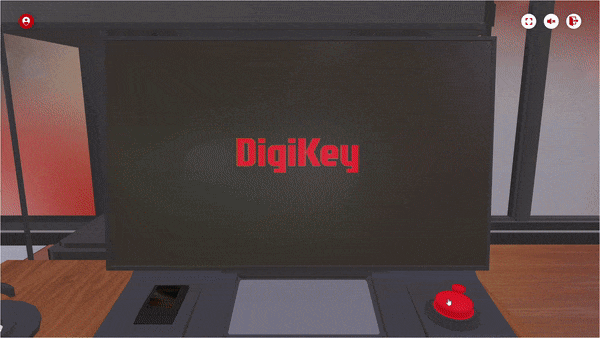
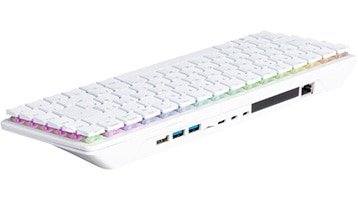
Raspberry Pi 500+
The Raspberry Pi 500+ is an all-in-one PC built on Raspberry Pi 5, featuring a quad-core Cortex-A76 CPU, dual 4K display support, 16GB RAM, and a 256GB SSD. Housed in a mechanical keyboard with RGB keys, it’s perfect for desktop computing and creative projects.
View Product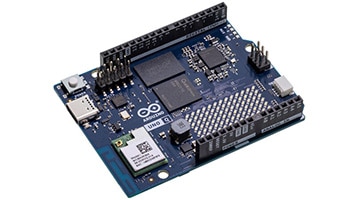
Arduino Uno Q
The Arduino Uno Q redefines what a maker board can be. Combining a quad-core 2.0 GHz Qualcomm Dragonwing™ QRB2210 processor running Debian Linux with a real-time STM32U585 microcontroller, it delivers hybrid computing in the classic UNO form factor. This dual-architecture design enables seamless development across Python, Arduino sketches, and AI models using the integrated Arduino App Lab. With up to 4 GB RAM, dual-band Wi-Fi 5, Bluetooth 5.1, and support for camera, display, and audio interfaces, the Uno Q is ideal for edge AI, robotics, smart devices, and embedded vision. Whether you're prototyping advanced automation or teaching next-gen embedded systems, the Uno Q offers the flexibility and power to build without limits.
View Product
DFRobot UniHiker K10
The UniHiker K10 is a beginner-friendly AI and IoT board with a 2.8" display, ESP32-S3 processor, camera, microphone, and sensors. Preloaded AI models and Wi-Fi/Bluetooth make it perfect for STEM education and smart projects.
View Product
Adafruit Fruit Jam
Fruit Jam is a mini computer powered by RP2350B with 16MB Flash, 8MB PSRAM, USB-C, microSD, DVI output, and Wi-Fi via ESP32-C6. Ideal for retro computing and CircuitPython projects.
View Product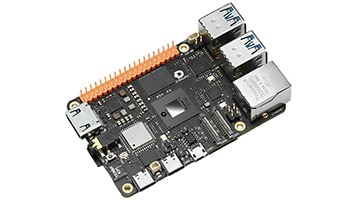
D-Robotics RDK X5
The RDK X5 features an octa-core CPU and 10 TOPS NPU for robotics and edge AI. With Ubuntu, ROS2, HDMI, USB 3.0, dual cameras, and Wi-Fi 6, it’s built for advanced automation.
View Product
CrowPanel E-Paper HMI Display
A low-power, sunlight-readable e-paper display with touch, Wi-Fi, Bluetooth, and GPIO interfaces. Perfect for IoT dashboards and battery-powered projects.
View Product
M5Stack Tab5
A 5" touchscreen IoT terminal with ESP32-P4, Wi-Fi 6, Bluetooth 5.2, camera, audio, and multiple expansion ports. Great for smart home hubs and industrial automation.
View ProductSeeed Studio Wio Tracker L1 Pro
A rugged LoRa and GPS tracker with OLED display, joystick, and 2000mAh battery. Ideal for off-grid communication and IoT tracking.
View Product
Nvidia Jetson Orin Nano Super Dev Kit
Delivers up to 40 TOPS AI performance with Arm CPU and Ampere GPU. Ideal for robotics, vision, and autonomous systems.
View Product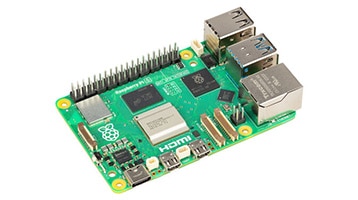
RASPBERRY PI 5
An accessible, low-cost single-board computer ideal for edge AI applications. Its powerful CPU can run full machine learning frameworks like PyTorch and TensorFlow, and supports GPU acceleration for inference (not training). Object detection (YOLOv8n) for images with 640×640 resolution runs about 5 FPS, and small LLMs (Llama8:3B) can generate responses at about 2 tokens per second. USB and PCIe slots allow for add-on AI acceleration hardware, which can dramatically increase speeds.
View Product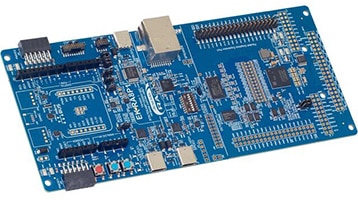
Renesas RA8P1
A 1GHz Cortex-M85 MCU with Ethos-U55 NPU for edge AI, plus advanced security and rich I/O. Perfect for vision and voice analytics.
View ProductPixelblaze V3 Standard
Wi-Fi LED controller with live coding, HDR rendering, and support for thousands of LEDs. Great for creative lighting and interactive art.
View Product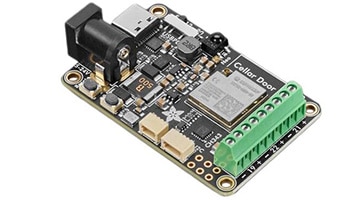
Adafruit Sparkle Motion
ESP32-based LED controller with WLED support, USB-C power, audio-reactive effects, and IR control. Ideal for large installations and wearable art.
View ProductADAFRUIT FEATHER RP2040 SCORPIO
The Adafruit Feather RP2040 Scorpio board provides eight pairs of level-shifted signal pins with ground pins to easily control eight LED strips at once. Combined with Adafruit’s code library (C++ or CircuitPython), the RP2040’s PIO processors can quickly push LED signal data to eight NeoPixel strips simultaneously while freeing the main processor for other tasks. As part of Adafruit’s Feather ecosystem, the Scorpio is compatible with dozens of add-on boards, and while you must code your own LED patterns, helpful examples on Adafruit’s website will get your project running quickly.
View Product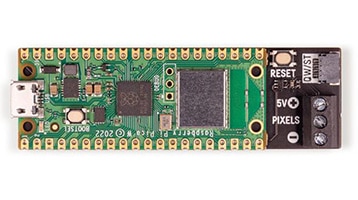
Pimoroni Plasma RP2040
RP2040 LED controller with screw terminals, USB-C, and Qwiic expansion. Great for mood lighting and creative IoT builds.
View Product
Adafruit NeoTrellis M4
ATSAMD51-based board with 8×8 RGB button grid, audio codec, and microSD. Ideal for MIDI controllers and interactive art.
View Product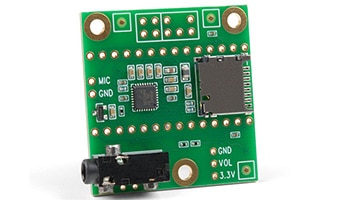
Teensy 4.0+ Audio Shield
Adds high-quality audio to Teensy 4.x with stereo codec, SD slot, and low-latency processing. Perfect for DIY synths and sound projects.
View Product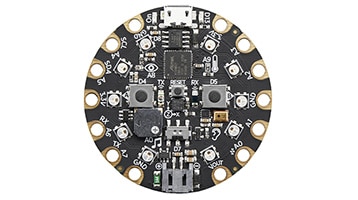
ADAFRUIT CIRCUIT PLAYGROUND EXPRESS
CPX is the PCB equivalent of a Mary Poppins bag: Just when you think you’ve explored all the features on this board, you discover there are more! While not intended for wearables, it’s currently by far my favorite all-in-one board for wearables and e-textiles. Packed with on-board sensors and actuators, its powerful ATSAMD21 Arm Cortex-M0 processor can be programmed in (at least) three different ways (see page 7). Connections aren’t limited to conductive thread; other methods demonstrated in the Adafruit Learning System include a bolt-on kit that doesn’t require any soldering!
View Product
Adafruit SparkleMotion Stick
Slim ESP32 LED controller with USB-C, audio-reactive effects, and IR control. Great for cosplay and portable LED art.
View Product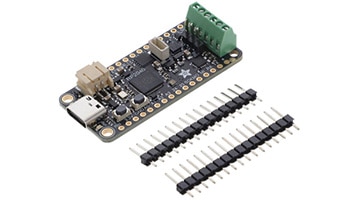
Adafruit Prop Maker Feather
ATSAMD21 board with accelerometer, NeoPixel driver, and audio amp for interactive props and cosplay builds.
View Product
Seeed Studio XIAO Family
The Seeed Studio XIAO series offers 14 ultra-compact boards for IoT, wearable, and embedded projects. Options include ARM, RISC-V, RP2040, and wireless-enabled variants supporting Wi-Fi, BLE, Zigbee, Thread, and Matter. Specialized models add sensors, cameras, and audio for AI and vision tasks. All feature USB-C, multiple GPIO pins, and compatibility with Arduino, MicroPython, and other frameworks—perfect for space-constrained designs and advanced IoT applications.
View Product






